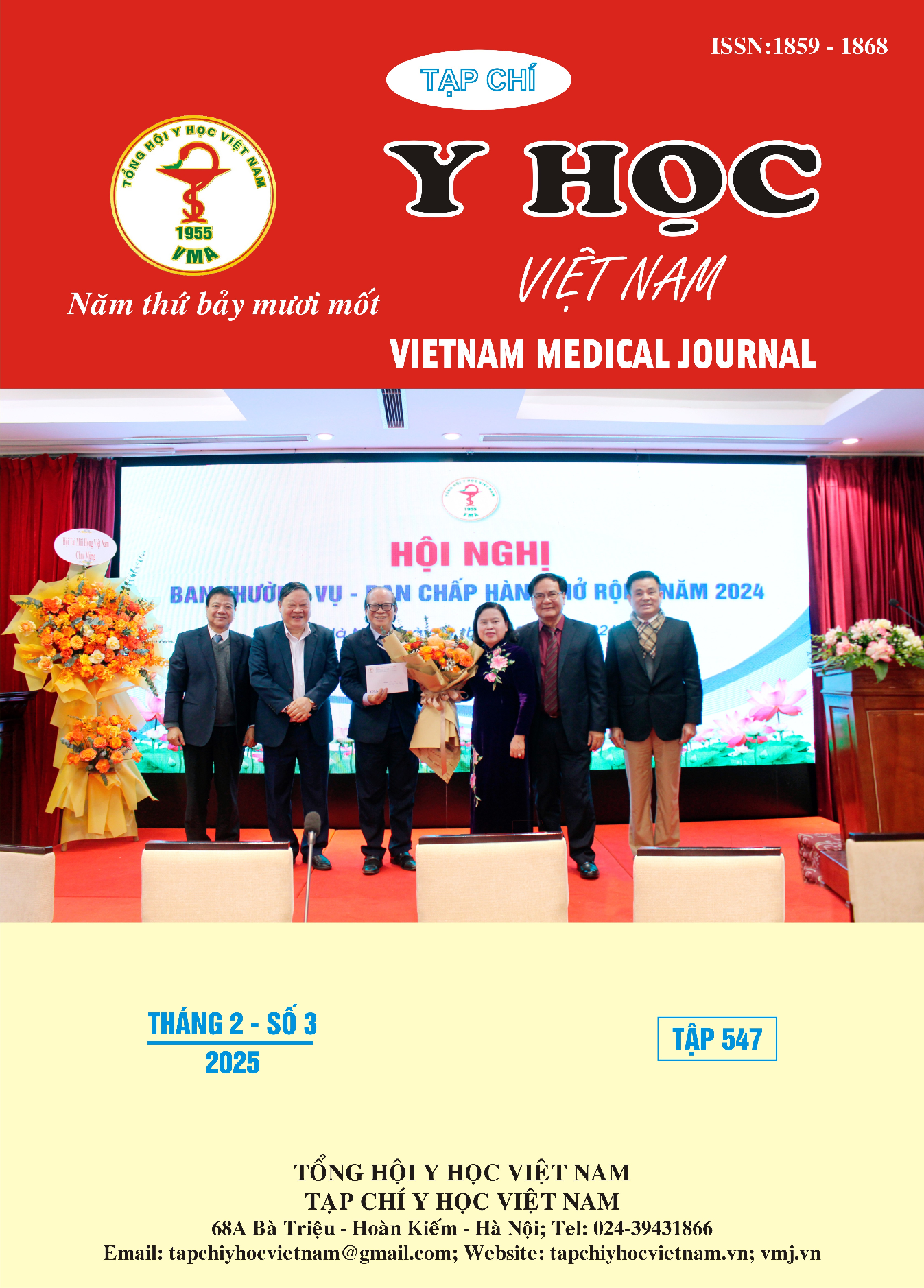RECURRENT VAGINITIS AND ITS RISK FACTORS IN WOMEN EXAMINE CAN THO GYNECOLOGY AND OBSTETRICS HOSPITAL IN 2023-2024
Main Article Content
Abstract
Background: Recurrent vaginitis or multiple episodes of vaginitis are related concepts involving repeated vaginal infections, but they differ in characteristics, frequency, and implications for diagnosis and treatment. Objectives: To determine the prevalence of recurrent vaginitis and to identify some risk factors for recurrent vaginitis in women examine Can Tho Gynecology and Obstetrics Hospital in 2023 - 2024. Subjects and methods: The study employed a complete sampling method from May 1, 2023, to May 31, 2024, recording a total sample size of n=5,063 participants for the cross-sectional descriptive study (objective 1). A simple random sampling method was used with a case-to-control ratio of 1:1, yielding a sample size of n1=n2=140 for each group in the case-control study (objective 2). Results: The prevalence of recurrent vaginitis was 20.5%. The distribution of recurrent vaginitis cases by frequency showed that 72.3% of patients experienced it twice, 17.3% three times, and 10.4% four or more times. Five significant risk factors for recurrent vaginitis were identified: overweight/obesity; high intake of sugary foods; wearing tight underwear; drying underwear in shaded or indoor areas; and sexual intercourse during menstruation. The odds ratios and 95% confidence intervals for these factors were 2.408 (1.386–4.183), 1.987 (1.109–3.559), 3.914 (1.906–8.04), 3.717 (1.398–9.883), and 5.071 (1.29–19.932), respectively, with p < 0.05. Conclusion: It is recommended to implement awareness campaigns on recurrent vaginitis or multiple episodes of vaginitis prevention, emphasizing risk factors such as weight management, dietary habits, and personal hygiene.
Article Details
Keywords
recurrent vaginitis, vaginitis risk factors
References
2. Trần Thị Lợi (2005), Viêm âm đạo, Hội thảo về viêm âm đạo TP HCM, tr. 1-18
3. Phan Anh Tuấn (2010), “Tỷ lệ và đặc điểm dịch tễ học bệnh viêm âm đạo do vi nấm tái phát”, Tạp chí Y học Hồ Chí Minh, tập 14, số 1, tr. 194-199
4. Bradshaw CS, Morton AN, Garland SM, Morris MB, Moss LM, et al. (2005), "Higher-risk behavioral practices associated with bacterial vaginosis compared with vaginal candidiasis", Obstet Gynecol 106(1): 105-114.
5. Denning D. W., Kneale M., Sobel J. D., Rautemaa-Richardson R. (2018), "Global burden of recurrent vulvovaginal candidiasis: a systematic review", Lancet Infect. Dis. 18, e339–e347. doi: 10.1016/S1473-3099(18)30103-8
6. Hellberg D, Zdolsek B, Nilsson S, Mardh PA (1995), "Sexual behavior of women with repeated episodes of Vulvovaginal candidiasis", Eur J Epidemiol 11(5): 575-579.
7. Niccolai LM, Kopicko JJ, Kassie A, Petros H, Clark RA, Kissinger P (2000), "Incidence and predictors of reinfection with Trichomonas vaginalisin HIV-infected women", Sexually Trans Dis. (2000) 27:284 8. 10.1097/00007435-200005000-00009
8. Powell AM, Nyirjesy P (2014), "Recurrent vulvovaginitis", Best Pract Res Clin Obstetr 10.1016/j.bpobgyn.2014.07.006
9. Rylander E, Berglund A-L, Krassny C, Petrini B (2004), "Vulvovaginal candida in a young sexually active population: prevalence and association with oro-genital sex and frequent pain at intercourse", Sex Transm Infect 80: 54-57.


